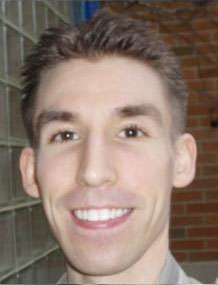Dr. Matthew D. Luciw
Matthew D. Luciw, Ph.D. is Post-Doctoral Researcher at IDSIA. His research interests include: models of cortical self-organization and information processing, multilayer neural networks with top-down (recurrent) connections, biological and computational visual attention and recognition, concept development, and autonomously developing robots.
Matt coauthored Topographic Class Grouping with Applications to 3D Object Recognition, Optimal In-Place Self-Organization for Cortical Development: Limited Cells, Sparse Coding and Cortical Topography, Motor Initiated Expectation through Top-Down Connections as Abstract Context in a Physical World, Developmental Learning for Avoiding Dynamic Obstacles Using Attention, Laterally Connected Lobe Component Analysis: Precision and Topography, A System for Epigenetic Concept Development through Autonomous Associative Learning, and A Biologically-Motivated Developmental System Towards Perceptual Awareness in Vehicle-Based Robots.
His research has included:
Recurrent Hebbian Neural Networks
A great mystery is how more abstract representation is developed in later cortical areas. It is also unclear how motor actions might alter lower-level cortical representation. To investigate this problem, and in order to learn to control agents and solve engineering-grade problems, Matt placed multiple layers of LCA neurons in sequence, and added an output, or “motor” layer (inspired by motor and premotor cortices), which directly controls actions. Each internal layer utilized bottom-up and top-down connections simultaneously in learning and information processing. Such networks can be called Hebbian since connections strengthen from correlated firing.
Lobe Component Analysis (LCA)
Inspired by Principal Component Analysis and Independent Component Analysis, he developed Lobe Component Analysis (LCA), a method for incrementally setting the weights of a neuronal layer through the biologically-plausible mechanisms of Hebbian learning and lateral inhibition. LCA’s strength lies first in its simplicity and generality (due to the aforementioned two biological mechanisms). It is intended to run in real-time on a developmental robot to develop its internal representation, which is environment and input dependent. Another major strength lies in its mathematical optimality.
Where-What Networks
Pathways of information processing dealing with what (identity) and where (spatiomotor) diverge in biological visual processing before rejoining at pre-motor areas in cortex. The separation of identity information from location information motivated the design of the Where-What Networks (WWN) for attention and recognition, which learns via Hebbian learning, using both bottom-up and top-down connections in both learning and performance. WWNs are biologically-inspired integrated attention and recognition learning systems. Matt showed how they develop the capability of selective attention to foregrounds over complex backgrounds.
Perceptual Awareness in Vehicles From Radars and a Camera
Matt and Dr. Zhengping Ji built an object learning system that incorporates sensory information from an automotive radar system and a video camera. The radar system provides a rudimentary attention for the focus of visual analysis on relatively small areas within the image plane. For each image, the attended visual area is coded by LCA-developed orientation-selective features, leading to a sparse representation. This new representation is input to a recurrent Hebbian learning network to learn an internal representation to be able to differentiate objects in the environment.
Concept Development
How does our semantic understanding emerge from a stream of low-level physical data? Matt investigated this question and created a system in which a “semi-concrete” concept of distance traveled, emerged from experience. Distance traveled involves sensory (e.g., movement can be perceived visually) and motor (the actions taken to move a certain amount) information. First, each information piece must be learned to be filled in when only the other piece is present. Second, the internal representation must be calibrated with existing semantic structure from the external environment.
Real-Time Learning of Dynamic Obstacle Avoidance
He built a system that could autonomously learn to avoid moving obstacles using the Hierarchical Discriminant Regression (HDR) learning engine. Obstacle avoidance experiments on the Dav robot were also done in this project.
Learn more about his research!
Matt earned his B.S. in Computer Science in 2003, his M.S. in Computer Science in 2006, and his Ph.D. in Computer Science in 2010, all at Michigan State University.
